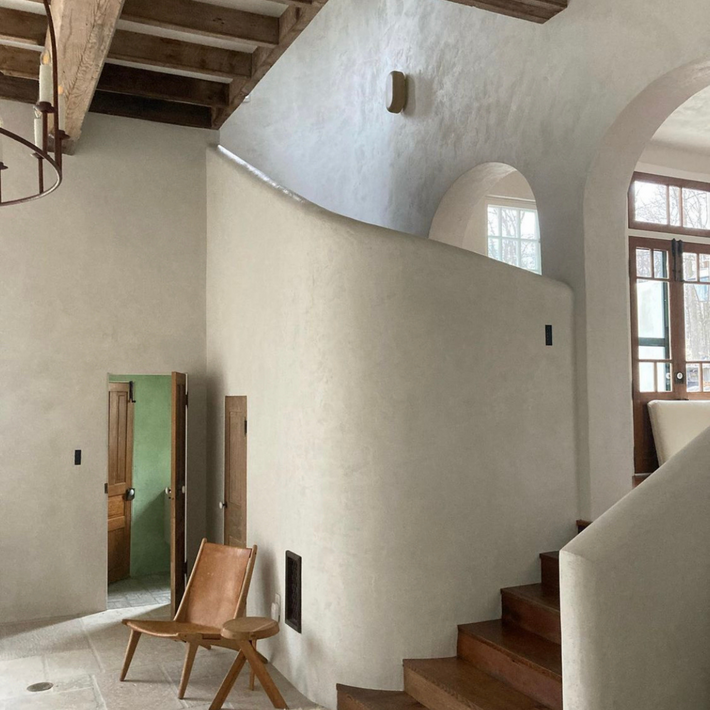Walls & Ceilings
Sealed vs Unsealed Finishes
Tadelakt, Marble, and Stone Finishes are sealed with Olive Oil Soap Sealer. This makes them wipeable and cleanable as they are no longer absorbent. One trade off to choosing a sealed finish is that they are harder to repair/touch up.
Sand, Limewash, Slurry Finishes are not sealed which leaves them absorbent. Unsealed absorbent finishes are not wipeable. The trade off is that unsealed finishes are easier to repair/touch up.
Damage types & risk
Staining & Etching can compromise both the functionality and the aesthetic continuity of a finish. Etching may occur when a finish is exposed to foods containing acids or dyes or personal care products with acidic chemicals. For kitchen and bathroom areas that are at higher risk for staining and etching, consider sealed finishes (Tadelakt, Marble, and Stone Finishes) + the necessity of being mindful of exposures + prompt cleanup
Chipping & Nicking can compromise both the functionality and aesthetic continuity of a finish. The risk for chipping and nicking increase in high wear and high traffic, consider using another material instead of plaster. Users assume all risk for using Earthaus plasters in high wear and high traffic areas
Steps & Skills
Fewer Steps & Less Technique Required: Sand, Stone, and Limewash Finishes.
More Steps & More Technique Required: Tadelakt* and Marble Finishes. Recommendation: Hire an experienced Plaster Artisan or DIY practice ahead of time.



